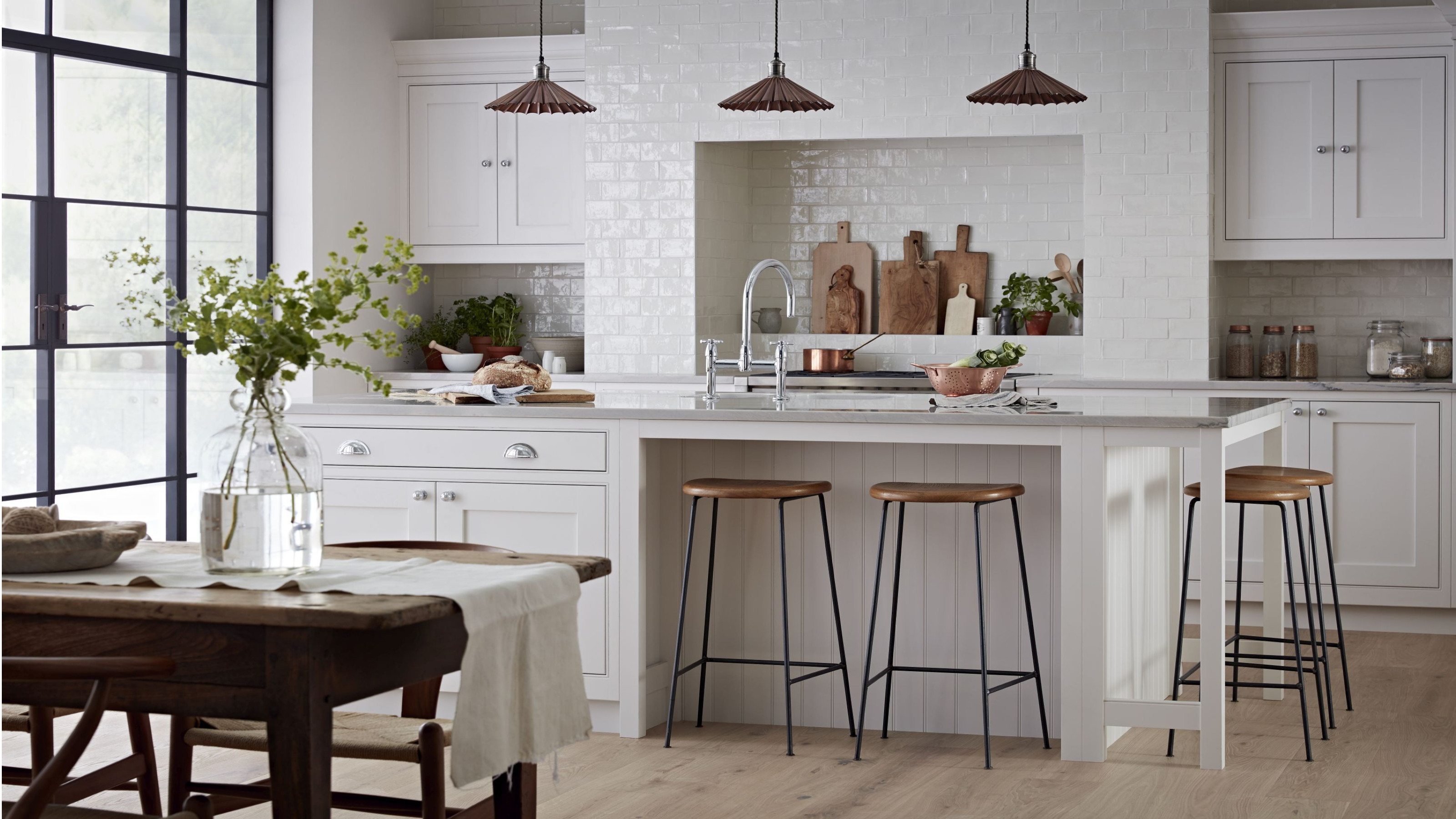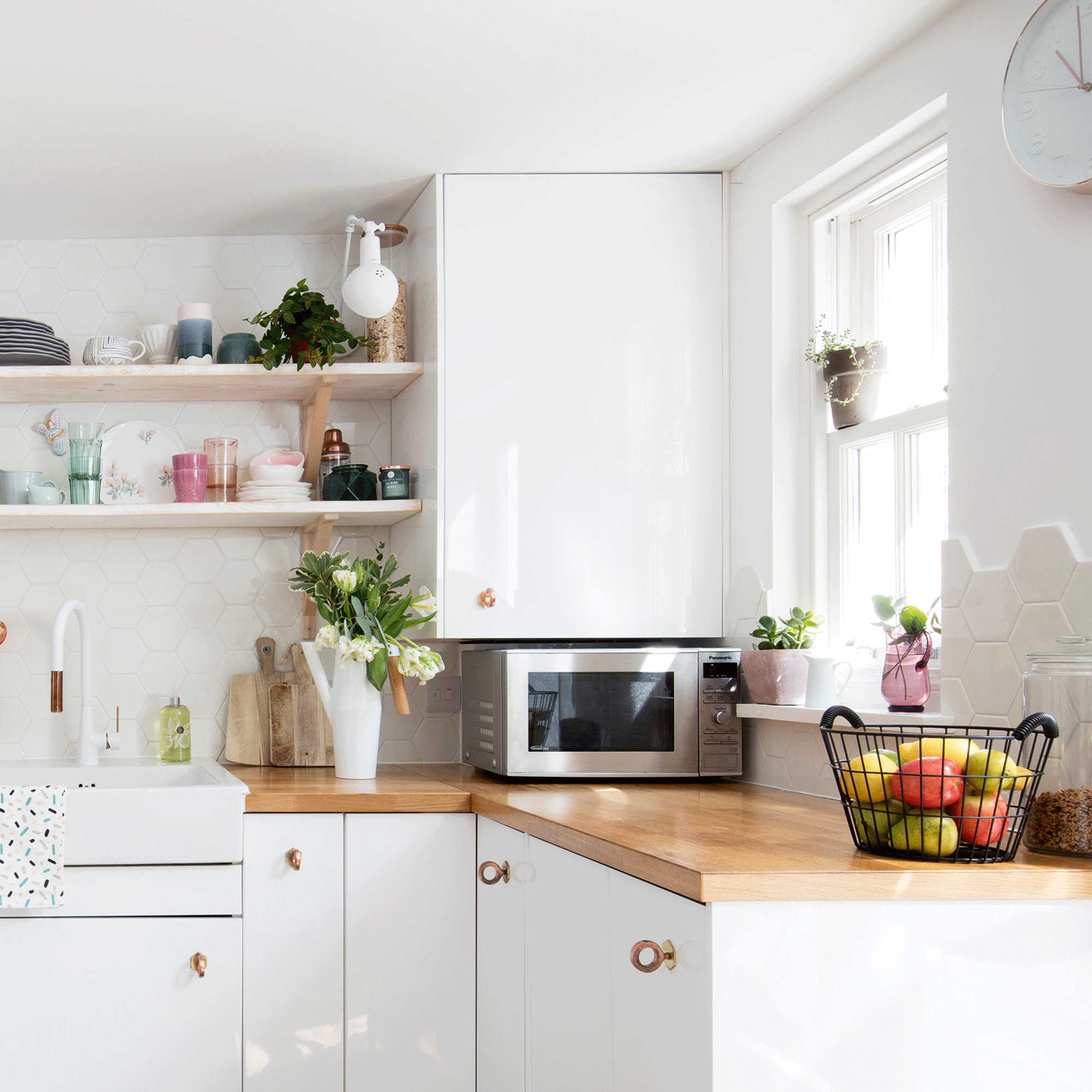The five hidden areas of the kitchen you’re forgetting to clean
Do you clean these spots regularly? Here’s why you definitely should…


Whenever we clean our kitchens, we always try and be as thorough as possible – especially if we’re doing a deep clean. Because, with lots of food debris, oil stains, and general life clutter, this room is often the messiest of all.
It’s also one of the rooms in the house with the most nooks and crannies – be it behind doors, or in air vents – leaving plenty of space for dirt and dust to hide. So it’s likely that even the most meticulous of cleaners may be missing some spots as they go about their kitchen cleaning routine.
To find out, we spoke to cleaning experts, who revealed the places that people (unintentionally) skip the most when cleaning their kitchen, and their kitchen cleaning tips for addressing them.
The kitchen spots you're missing when cleaning
1. The seals on your fridge

Giving your fridge a scrub before restocking it for the week is a given for most of us. But are you regularly cleaning the rubber seals inside your fridge, too? Emily Barron, cleaning expert at Property Rescue, said, 'The rubber seals on your fridge are one place that’s often forgotten, and can become party central for germs and even insects!' So it’s vital to address this area – but how should you be cleaning it?
Emily continued, 'The best way to clean is by pulling the rubber back with your fingers and using a brush and a mild soap and water solution to clean thoroughly. If the seals are particularly dirty or stained, you may need to use a mild abrasive cleaner, such as baking soda, to remove the buildup. Try to incorporate this into your cleaning at least once a month.'
2. Your extractor fan

When cleaning, our attention is usually focused on the hob – not the extractor fan that sits above it. But this is a super important place to scrub regularly, as it’s routinely subjected to excess water in the form of steam, and food splashes from cooking. Because of this, it can easily accumulate a serious layer of grease.
In order to keep it spick and span, wipe your extractor fan down with a kitchen towel after every use, and once a month, wash all the removable parts with a water and washing up liquid solution – although be sure not to get any excess water inside the mechanisms. Wipe down the outside with the same solution, and be sure to dry it afterwards too.
Sign up to our newsletter for style inspiration, real homes, project and garden advice and shopping know-how
3. Underneath appliances

This won't apply to everyone, but if you can (and your appliances aren't built in), it's well worth cleaning underneath our kitchen appliances – be it our ovens, microwaves, or washing machines – especially given that it's a spot many of us have probably neglected to clean for years.
Cleaning expert at PriceYourJob, Matthew Harrison, said, 'Although it’s a big job, you should aim to clean underneath large appliances roughly twice a year.
'Larger appliances will need to be rolled out so you can get a good clean underneath and behind them. You’ll be surprised at just how much can accumulate underneath! Remove any larger bits of debris and then vacuum the rest of the dust and debris. Then, use a wet cloth to scrub any stains or grime away.'
4. Your kitchen sponge
It’s the thing we all use to wash dirty dishes, which means we often forget that our kitchen sponge needs washing itself! In fact, it is vital, Olivia Young, cleaning chemist at Astonish says.
She explained, 'It’s important to clean your kitchen sponge thoroughly after use, in order to stop it soaking up germs. You can do this by spritzing it with a concentrated disinfectant spray. If easier, you can also put it in the washing machine with your tea towels.'
5. Kettle
Cleaning expert Nicola Rodriguez, of Essex House Dolly, told us, 'One thing that often gets missed is your kettle – and you should descale your kettle as soon as you start to see a build up.'
And it's easy enough to do: 'Pop a few cut lemons in regularly and just boil it – then let it simmer for 10 minutes and reboil again. If you have harsh limescale, put a few drops of white vinegar and boil – though only fill your kettle a quarter of the way, as it does bubble!'
So how often should we be doing this? Matthew said, 'If you use your kettle every day, you should perform a deep clean on it a few times each year. If you live in an area with hard water, you should aim to descale the kettle once each month. It’s also important to clean the outside of the kettle weekly, or whenever any splatters happen.'
If you've been guilty of neglecting any of these kitchen areas, consider this your sign to get cleaning.

Amy Hunt is an experienced digital journalist and editor, now working in a freelance capacity specialising in homes and interiors, wellness, travel and careers. She was previously Lifestyle Editor at woman&home, overseeing the homes, books and features sections of the website. Having worked in the industry for over eight years, she has contributed to a range of publications including Ideal Home, Livingetc, T3,Goodto, Woman, Woman’s Own, and Red magazine.